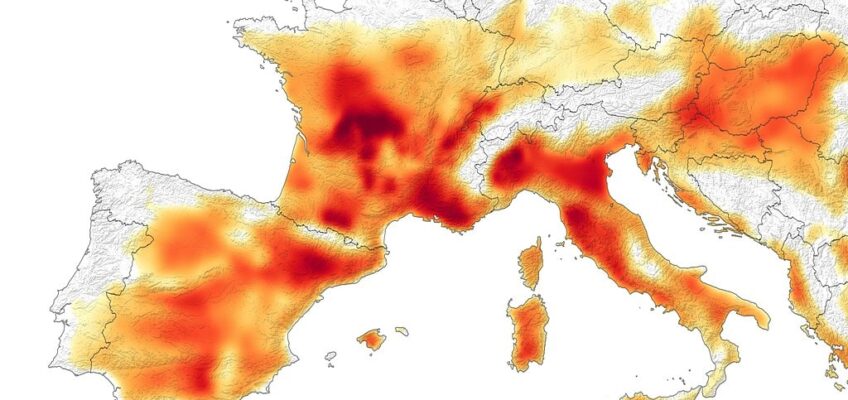Adapting to Climate Challenges: Proactive Measures to Ensure Data Centre Efficiency and Reliability
As climate change continues to intensify, the world is witnessing increasingly extreme weather events, including devastating heatwaves and widespread wildfires. For data centre operators, these environmental challenges pose significant risks to the efficiency and reliability of their critical infrastructure. In response to the mounting concerns, Vertiv (NYSE: VRT), a leading global provider of critical digital infrastructure and continuity solutions, has issued updated guidance aimed at helping data centres navigate extreme heat and maintain optimal performance. This article explores the latest recommendations from Vertiv, highlighting proactive measures that can improve energy efficiency and operational resilience during times of environmental stress.
The Escalating Challenges of Extreme Heat
The past eight years have been the hottest on record, and with the El Niño weather pattern exacerbating the situation, 2023 is projected to bring record-breaking temperatures. Across the northern hemisphere, regions like the U.S., Mexico, Canada, Europe, and Asia have already experienced relentless heatwaves, while Canada’s widespread wildfires have triggered air quality alerts in several areas. Such events place immense pressure on utility providers and data centre operators alike, making it crucial to address the impacts of extreme heat.
Vertiv’s Updated Guidance: Preventive Maintenance and Energy Efficiency
Vertiv’s updated guidance seeks to equip data centre operators with proactive strategies to cope with extreme weather events, safeguarding their critical operations. Here are some key recommendations provided by Vertiv:
- Clean or Change Air Filters: The wildfires and resulting smoke, which can travel vast distances, pose a significant threat to data centre equipment. Data centre operators should regularly clean or replace air filters in their thermal management and HVAC systems to shield sensitive electronics from particulates present in the air.
- Accelerate Planned Maintenance and Service: Extreme heat and poor air quality can strain data centre infrastructure and lead to unexpected failures. To avoid disruptions, organizations should prioritize preventive maintenance, including tasks like cleaning condenser coils and maintaining refrigerant charge levels in cooling units.
- Activate Available Efficiency Tools: Modern UPS (Uninterruptible Power Supply) systems often include high-efficiency eco-modes that reduce power consumption. During heatwaves and peak demand, leveraging these tools can make a critical difference in reducing strain on the grid and ensuring uninterrupted service.
- Leverage Alternative Energy Sources: Data centres with access to viable alternative energy should utilize off-grid power sources, such as solar arrays, wind farms, or lithium-ion batteries. These sources enable peak shifting or shaving, reducing reliance on the grid during heatwaves. Diesel generators, which produce greenhouse gases, should be avoided during extreme heat events.
Expert Insights from Vertiv
John Niemann, Senior Vice President for the Global Thermal Management Business at Vertiv, emphasized the importance of proactive preparation in handling the challenges of extreme heat. Collaborating with electricity providers to manage demand and prioritizing preventive maintenance are key steps in reducing equipment failures related to heat stress.
Flora Cavinato, Global Service Portfolio Director at Vertiv, highlighted the impact of record-setting heat on European data centres. To ensure data centre availability, Cavinato emphasized the need for thermal redundancy and partnering with service providers offering swift response times and proactive maintenance programs.
Supplementing Previous Guidance
Vertiv’s latest recommendations complement previous guidance issued by the company. Some of the additional suggestions include:
- Running Multiple Cooling Units: Distributing the cooling load across multiple units can save energy and reduce strain on individual units during extreme weather conditions.
- Exploring Various Cooling Systems: Considering liquid cooling, closed-loop chilled water cooling, or evaporative free cooling systems, designed for high-temperature environments, can improve data centre cooling efficiency.
- Using Predictive Modelling: Rather than relying solely on historic data, using predictive modelling helps better anticipate thermal impacts during the increasing frequency of extreme heat events.
As extreme weather events become more frequent and severe, data centre operators must take proactive measures to maintain operational efficiency and reliability. Vertiv’s updated guidance provides valuable insights into managing extreme heat, offering preventive maintenance tips and energy efficiency strategies to safeguard critical infrastructure during environmental challenges. By adhering to these recommendations, data centres can stay resilient in the face of climate change and ensure uninterrupted service delivery.
For more information on data centre power and cooling or business continuity and data centre preventive maintenance during extreme heat events, visit Vertiv.com









